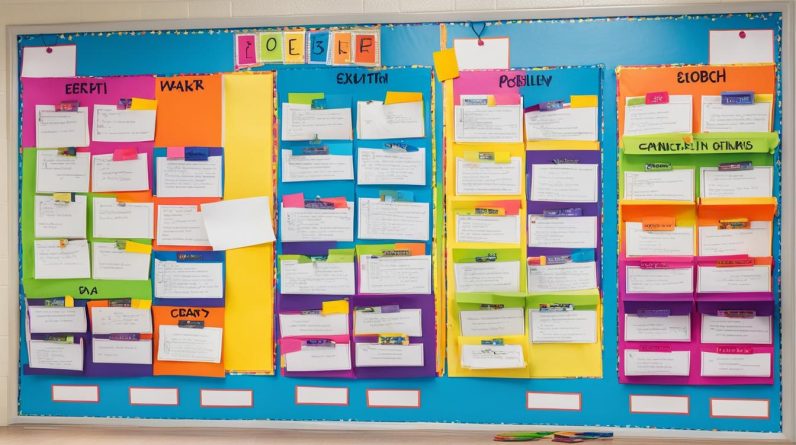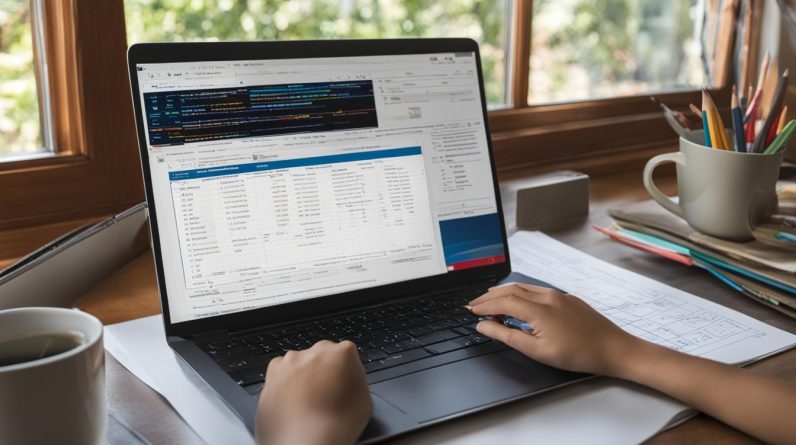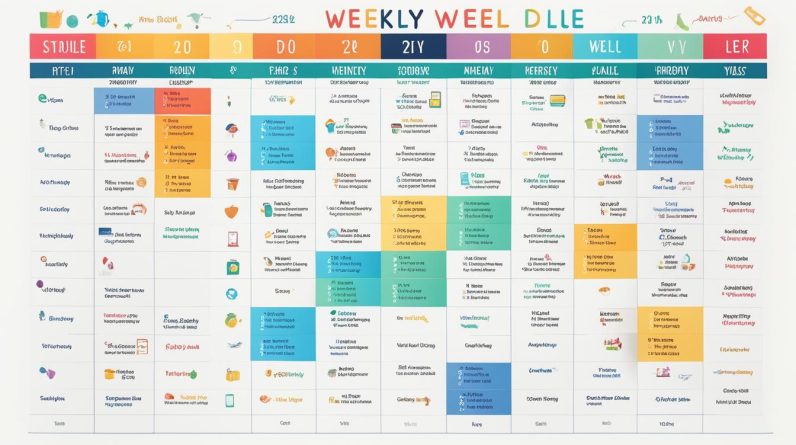The COVID-19 pandemic has led to a surge in families opting for homeschooling as an alternative to traditional education. While homeschooling offers unique advantages, it can also come with additional costs. However, with careful planning and knowledge of available tax benefits, you can maximize your savings and make homeschooling more affordable.
Although there are no federal tax benefits specifically tailored for homeschooling, some states offer tax breaks for homeschooling families. States like Illinois, Indiana, Louisiana, and Minnesota provide tax credits or deductions to help offset homeschooling expenses. Understanding your state’s tax laws and taking advantage of these benefits can significantly reduce your overall costs.
Key Takeaways:
- There are no federal tax benefits exclusively for homeschooling, but some states offer tax breaks for homeschooling families.
- States like Illinois, Indiana, Louisiana, and Minnesota provide tax credits or deductions to help reduce homeschooling expenses.
- Research your state’s tax laws and consult with a tax consultant to understand the available tax benefits for homeschooling.
- Maximize savings by taking advantage of state tax breaks, utilizing free or low-cost curriculum options, and exploring sales and discounts.
- While homeschooling may come with additional costs, careful planning and resourcefulness can make it a more affordable educational choice for your family.
The Average Cost of Homeschooling
Homeschooling can be a wonderful educational option for your children, but it’s essential to understand the costs involved. When considering homeschooling, you’ll need to budget for various expenses, including curriculum and learning materials, school supplies, field trips, extracurricular activities, and testing fees. These costs can add up quickly, so it’s important to plan ahead and find ways to manage them effectively.
On average, homeschooling costs range from $700 to $1,800 per student annually. This figure accounts for the necessary resources and materials to provide a comprehensive education. For a family of four with two school-aged children, the average cost of homeschooling can range from $1,400 to $3,600 per year. It’s important to note that these figures can vary based on individual circumstances, geographic location, and the specific curriculum and resources chosen.
The cost of curriculum and materials is one of the significant expenses associated with homeschooling. There are various options available, from free or low-cost online resources to prepackaged curricula that can cost over $1,000. Additionally, school supplies such as textbooks, notebooks, and art materials can also contribute to homeschooling costs.
Field trips and extracurricular activities are essential components of a well-rounded homeschooling experience. These experiences provide valuable hands-on learning opportunities, but they can also add to the overall cost. Transportation expenses, admission fees, and materials for these activities should be factored into your homeschooling budget.
Table: The Average Cost of Homeschooling
| Expense | Estimated Cost Range |
|---|---|
| Curriculum and Learning Materials | $200 – $1,500 per student annually |
| School Supplies | $100 – $300 per student annually |
| Field Trips and Extracurricular Activities | $100 – $500 per student annually |
| Testing Fees | $50 – $150 per student annually |
As you can see from the table, homeschooling expenses can vary depending on your choices and preferences. It’s important to create a detailed budget that accounts for all these costs to ensure you can provide a high-quality education for your children.
By carefully planning and exploring cost-effective options, you can manage homeschooling expenses without compromising your child’s education. In the next section, we will explore the cost comparison between homeschooling, public schools, and private schools to help you make an informed decision.
Homeschooling vs. Public and Private School Costs
When considering the cost of education, it’s important to weigh the expenses associated with homeschooling, public schools, and private schools. Public school education is generally free in the United States, funded by property taxes and government aid. On the other hand, private school education can be quite expensive, with average annual tuition reaching $23,839.
In addition to tuition, private school students may incur additional expenses such as laptops, books, uniforms, field trips, and supplies. These costs can add up significantly, making private education a substantial financial investment.
Contrastingly, homeschooling can be a more cost-effective option compared to both public and private school. While homeschooling also incurs expenses, such as curriculum materials and supplies, there are ways to minimize costs.
It’s essential to consider individual preferences and learning styles when deciding between homeschooling and traditional schooling options. Assessing the financial implications of each choice is also crucial to make an informed decision.
“Homeschooling can provide personalized education tailored to your child’s unique needs, while public and private schools offer structured environments and access to a variety of resources.”
To help you visualize the cost differences, here is a breakdown of the average costs associated with each type of education:
| Educational Option | Average Annual Cost |
|---|---|
| Public School | No tuition, but families may have expenses for supplies, extracurricular activities, and transportation. |
| Private School | Average annual tuition of $23,839, with additional expenses for laptops, books, uniforms, field trips, and supplies. |
| Homeschooling | Costs vary, but on average range from $700 to $1,800 per student annually, depending on curriculum and materials. |
As you can see, public education is typically the most affordable option, while private schooling comes with a significant price tag. Homeschooling falls within a moderate range, with costs varying based on a family’s chosen curriculum and additional materials.
Ultimately, the decision between homeschooling, public school, or private school should be based on your family’s values, educational goals, and financial circumstances. By carefully evaluating the costs and benefits of each option, you can make the best choice for your child’s education.
Hidden Costs of Homeschooling
Homeschooling is often considered a cost-effective alternative to traditional schooling. However, it’s important to be aware of the hidden expenses that can arise when educating your child at home. These additional homeschooling costs can include curriculum expenses, transportation, and supplies, which can significantly impact your budget.
Curriculum Expenses
Choosing the right curriculum for your child is crucial but can come with a price tag. While there are free options available, some families prefer to invest in prepackaged curricula that offer comprehensive lesson plans and resources. These higher-end curricula can cost over $1,000 per year per child. It’s essential to consider your budget and educational goals when deciding on a curriculum.
Transportation
Field trips and extracurricular activities are an integral part of homeschooling, providing valuable hands-on learning experiences. However, these outings often require transportation, which can add to your overall homeschooling costs. Whether it’s taking your child to a museum, joining a homeschooling group, or participating in community events, factoring in transportation expenses is necessary to avoid any budget surprises.
Supplies
Homeschooling requires various supplies, including textbooks, workbooks, art materials, science experiment supplies, and stationery. While some of these items may be reusable year after year, others need to be replenished regularly. Ensuring you have an adequate supply of materials can enhance your child’s learning experience but can also contribute to your homeschooling expenses.
Additionally, having children at home all day may increase your grocery spending. Providing nutritious meals and snacks to keep your child energized and focused during homeschooling sessions is essential but can impact your monthly food budget.
Despite these additional expenses, there are ways to manage and minimize the impact on your finances. Seeking out cost-effective curriculum options, buying supplies in bulk or during sales, and planning field trips that are closer to home can all help reduce homeschooling costs. By carefully budgeting and planning, you can provide your child with an enriching homeschooling experience without breaking the bank.

| Expense | Estimated Cost Range |
|---|---|
| Curriculum | $0 – $1,000+ |
| Transportation | $0 – $200+ |
| Supplies | $200 – $500+ |
| Groceries | $200 – $500+ |
Tax Breaks for Homeschooling Families
While there are no federal tax credits or deductions for homeschooling, several states offer tax breaks specifically for homeschooling families. These tax breaks can help alleviate some of the financial burden associated with homeschooling expenses. Here’s a breakdown of some of the state tax benefits available:
Education Expense Credit in Illinois
Illinois provides the Education Expense Credit, which can be worth up to $750 per year for homeschooling families. This credit can help offset the costs of curriculum materials, books, and other educational resources.
Tax Deduction in Indiana
Homeschooling families in Indiana can benefit from a tax deduction of up to $1,000 per year. This deduction can be claimed for qualifying expenses related to homeschooling, such as curriculum materials and educational supplies.
Tax Deduction in Louisiana
In Louisiana, homeschooling families can take advantage of a tax deduction of up to $5,000 per student. This deduction can be used to offset the costs of educational materials, textbooks, and other homeschooling expenses.
Tax Credit or Subtraction in Minnesota
Minnesota offers a tax credit or subtraction for homeschooling expenses. This benefit allows homeschooling families to deduct a certain amount from their overall tax liability or receive a credit against their taxes owed.
It’s important for homeschooling families to research their state’s specific tax benefits and eligibility criteria. Each state may have different requirements and limitations when it comes to claiming tax breaks for homeschooling expenses.

By taking advantage of these tax breaks, homeschooling families can significantly reduce their overall expenses and make homeschooling more affordable. It’s crucial to keep detailed records of all homeschooling-related expenses and consult with a tax professional to ensure compliance with state tax laws.
How to Save Money on Homeschooling
When it comes to homeschooling, finding ways to save money can be a top priority for many families. By being resourceful and strategic, you can stretch your budget while still providing an excellent education for your children. Here are some tips to help you save money on homeschooling:
Take Advantage of Sales and Tax-Free Weekends
One of the best ways to save money on school supplies is by taking advantage of sales and tax-free weekends. Keep an eye out for back-to-school sales at local stores or online retailers. Additionally, many states offer tax-free weekends where you can purchase eligible items without paying sales tax. This can lead to significant savings on textbooks, workbooks, art supplies, and more.
Explore Free or Low-Cost Curriculum Options
Curriculum costs can quickly add up, but there are plenty of free or low-cost options available. Take the time to research online resources, educational websites, and open educational resources (OER) that offer high-quality lesson plans, worksheets, and activities completely free of charge. You can also find affordable homeschooling curricula through used book sales, curriculum swaps, or local homeschooling groups.
Utilize Free Learning Programs and Virtual Field Trips
Expand your children’s learning experiences without breaking the bank by utilizing free learning programs and virtual field trips. Local libraries often offer free educational programs and workshops that cover a wide range of subjects. You can also find virtual field trips and online tours that allow your children to explore museums, historical sites, and scientific wonders from the comfort of your own home.
By being resourceful and strategic, you can stretch your budget while still providing an excellent education for your children.
– Homeschooling Parent
Consider Life Skills and Online Courses
Incorporating life skills into your curriculum can help you save money and provide practical knowledge for your children. Teach them skills like budgeting, cooking, gardening, and household maintenance, which can be valuable assets in the future.
Furthermore, there are numerous free or low-cost online courses available that cover a wide range of subjects. These courses can supplement your homeschooling curriculum and provide your children with the opportunity to explore their interests in-depth without the need for expensive textbooks.
Budgeting for Homeschooling
Creating a budget is an essential step in managing homeschooling expenses. Take the time to plan your expenses and allocate funds for curriculum materials, supplies, extracurricular activities, and educational outings. By having a clear budget in place, you can identify areas where you can cut costs and find creative alternatives to pricey resources.
Remember, homeschooling is not solely about the curriculum and materials; it’s about creating an enriching learning environment for your children. With careful planning and resourcefulness, you can save money on homeschooling without compromising the quality of your children’s education.
| Tips for Saving Money on Homeschooling |
|---|
| ✓ Take advantage of sales and tax-free weekends |
| ✓ Explore free or low-cost curriculum options |
| ✓ Utilize free learning programs and virtual field trips |
| ✓ Consider life skills and online courses |
| ✓ Create a budget for homeschooling expenses |

Can Kids Be Homeschoooled for Free?
While homeschooling can incur expenses, it is possible to homeschool on a budget and even find free resources. The cost of homeschooling may vary depending on your learning goals, the number of children, and your ability to find opportunities to save money. While you may not be required to pay fees to the state for homeschooling, it’s important to consider individual expenses and explore ways to minimize costs.
One of the key factors in homeschooling on a budget is finding free or low-cost curriculum options. There are several websites and online platforms that offer a wide range of educational materials for free, covering various subjects and grade levels. Additionally, public libraries are a great resource for finding free books, reference materials, and educational programs for homeschooling.
“Using free or low-cost curriculum options and resources can help you save money while providing a quality education for your children.”
Another way to save on homeschooling expenses is by utilizing the vast array of free educational websites and online learning platforms. These resources often offer interactive lessons, videos, quizzes, and other learning materials, covering a wide range of subjects. Incorporating these online resources into your homeschooling routine can help reduce the cost of purchasing physical textbooks and workbooks.
“By leveraging free educational websites and online platforms, you can provide a diverse and engaging learning experience without breaking the bank.”
Furthermore, don’t forget to take advantage of community resources for homeschooling. Local museums, zoos, science centers, and other cultural institutions often offer discounted or free admission for homeschooling families. These outings not only provide valuable educational experiences but also offer opportunities for socialization and exploration.
“Exploring community resources allows you to incorporate field trips and hands-on learning experiences into your homeschooling curriculum at a fraction of the cost.”
While there are expenses associated with homeschooling, it’s important to remember that you have control over your budget. By opting for free or low-cost curriculum options, utilizing online resources, and taking advantage of community offerings, you can homeschool your children without breaking the bank.
| Ways to Homeschool on a Budget |
|---|
| Utilize free or low-cost curriculum options |
| Take advantage of online learning platforms |
| Utilize resources from public libraries |
| Explore free educational websites |
| Take advantage of community resources and discounts |

Is Homeschooling Cost-Effective?
When it comes to choosing the best educational option for your children, one important factor to consider is the cost-effectiveness of homeschooling. By comparing the costs of homeschooling with those of public and private schools, you can make a well-informed decision that aligns with your budget and educational goals.
Many families find that homeschooling offers a cost-effective alternative to traditional schooling. While the average cost of homeschooling may initially seem high, it is important to consider the long-term savings and benefits. Let’s take a closer look at how homeschooling compares to public and private schools in terms of cost.
Homeschooling Costs vs. Public and Private Schools
When comparing the costs of homeschooling with those of public and private schools, it becomes evident that homeschooling can be a more affordable option. While public schools are generally free, private schools often come with hefty tuition fees and additional expenses. By homeschooling, you can avoid these extra costs and allocate your budget more efficiently.
To illustrate this comparison, let’s take a look at the average cost of homeschooling versus private school tuition. According to research, the average homeschooling cost ranges from $700 to $1,800 per student annually. In contrast, private school tuition can reach an average of $23,839 per year.
By homeschooling, you can potentially save thousands of dollars per year per child. This cost-effectiveness allows you to invest in high-quality curriculum materials, extracurricular activities, and personalized educational experiences tailored to your child’s needs and interests.
Considering Your Budget and Educational Goals
When determining the cost-effectiveness of homeschooling, it is crucial to evaluate your budget and educational goals. Homeschooling allows you to have full control over the allocation of your resources and tailor your child’s education to their unique needs.
By creating a comprehensive budget, you can allocate funds for curriculum materials, resources, and enrichment activities. Additionally, you have the flexibility to adjust your expenses according to your financial situation. This level of control and customization empowers you to make the most cost-effective decisions for your family.
Cost Comparison of Homeschooling, Public, and Private Schools
| Average Cost | |
|---|---|
| Notebook | Price per piece |
| Pen | Price per piece |
| Textbook | Price per piece |
The table above provides a simplified cost comparison of homeschooling, public schools, and private schools. It is important to note that the actual costs may vary depending on various factors such as the number of children, curriculum choices, and extracurricular activities.
Do You Get a Tax Credit for Homeschooling?
While there are no federal tax credits or deductions specifically for homeschooling, some states do offer tax benefits for homeschooling families. It’s important to research your state’s tax laws and consult with a tax consultant to understand any available tax benefits.
Although federal tax credits for homeschooling are not available, you can explore other strategies to save money while homeschooling. By utilizing state tax benefits, you can still find ways to reduce your expenses and maximize your savings.
Remember, every state has different tax laws and regulations regarding homeschooling, so it’s crucial to familiarize yourself with the specific provisions in your state. Consulting with a tax professional will provide you with the necessary guidance to take advantage of any available tax benefits.
State Tax Benefits for Homeschooling
Several states offer tax credits or deductions for homeschooling expenses. Here are a few examples:
- Illinois: Provides the Education Expense Credit worth up to $750 per year.
- Indiana: Offers a tax deduction of up to $1,000 per year.
- Louisiana: Provides a tax deduction of up to $5,000 per student.
- Minnesota: Offers a tax credit or subtraction.
These state tax benefits can help alleviate the financial burden of homeschooling expenses.
| State | Tax Benefit |
|---|---|
| Illinois | Education Expense Credit worth up to $750 per year |
| Indiana | Tax deduction of up to $1,000 per year |
| Louisiana | Tax deduction of up to $5,000 per student |
| Minnesota | Tax credit or subtraction |
It’s crucial to check with your state’s tax authority or consult with a tax professional to understand the specific eligibility criteria and requirements for these tax benefits.
Alternative Strategies for Saving Money
While federal tax credits may be unavailable for homeschooling, you can implement other cost-saving strategies:
- Take advantage of sales and tax-free weekends to purchase school supplies at discounted prices.
- Explore free or low-cost curriculum options.
- Utilize resources at local libraries, such as free learning programs, books, and materials.
- Look for virtual field trips or online tours to provide educational experiences without additional costs.
- Incorporate life skills into the curriculum to teach valuable lessons without the need for expensive resources.
- Consider free or low-cost online courses to supplement your homeschooling program.
By implementing these strategies, you can reduce your expenses and make homeschooling more affordable.
In conclusion, while there are no federal tax credits specifically for homeschooling, some states offer tax benefits. It’s essential to understand your state’s specific tax laws and consult with a tax consultant. Exploring alternative cost-saving strategies is also crucial. By leveraging state tax benefits and implementing budget-friendly approaches, you can navigate the financial aspects of homeschooling more effectively.
The Bottom Line
Homeschooling can be a rewarding educational choice, providing flexibility and personalized learning for your children. However, it’s essential to manage your homeschooling budget and find ways to minimize costs. With careful financial planning and cost-saving strategies, you can provide a quality education for your children while staying within your means.
One important step is to consider your individual preferences and educational goals. This will help you prioritize and allocate your homeschooling budget effectively. Researching state tax benefits is another valuable approach. Some states offer tax credits or deductions for homeschooling expenses, allowing you to reduce your overall costs.
To further manage your homeschooling costs, explore various cost-saving strategies. Look for free or low-cost curriculum options, take advantage of sales and tax-free weekends to purchase school supplies, and utilize resources available at local libraries or online. Additionally, incorporating life skills into your curriculum and considering free or affordable online courses can help you cut expenses while providing a well-rounded education.
By carefully planning your homeschooling budget, researching state tax benefits, and finding ways to save money on curriculum and supplies, you can successfully manage the financial aspects of homeschooling. Remember, homeschooling is not just about providing education; it’s about creating a nurturing and enriching learning environment for your children.
FAQ
Are there any tax benefits for homeschooling?
While there are no federal tax benefits specifically for homeschoolers, some states offer tax breaks for homeschooling families.
How much does homeschooling cost on average?
Homeschooling costs can range from $700 to $1,800 per student annually, depending on factors such as curriculum and extracurricular activities.
How does the cost of homeschooling compare to public and private school?
Homeschooling can be a more cost-effective option compared to public or private school, but individual preferences and financial implications should be considered.
What are the hidden costs of homeschooling?
Hidden costs of homeschooling can include curriculum expenses, transportation for field trips, and the purchase of supplies for science labs or arts and crafts projects.
Are there any tax breaks available for homeschooling families?
Some states offer tax breaks for homeschooling families, such as tax deductions and education expense credits.
How can I save money on homeschooling?
Families can save money on homeschooling by taking advantage of sales and tax-free weekends, exploring free or low-cost curriculum options, and utilizing local libraries for free learning programs.
Can homeschooling be done for free?
While there may be costs involved in homeschooling, there are free curriculum options and resources available that can help minimize expenses.
Is homeschooling cost-effective?
Homeschooling can be a cost-effective option for families when compared to public or private school, taking into account individual costs and preferences.
Are there any tax credits for homeschooling?
There are no federal tax credits specifically for homeschooling, but some states offer tax benefits for homeschooling expenses.
How can I manage the costs of homeschooling?
To manage the costs of homeschooling, it is important to budget for expenses, research state tax benefits, and find ways to minimize costs through sales and cost-saving strategies.






